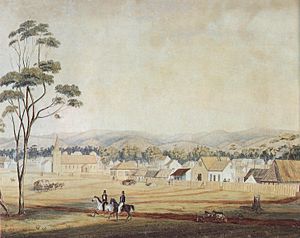Joseph Whittaker (botanist) facts for kids
Quick facts for kids
Joseph Whittaker
|
|
|---|---|
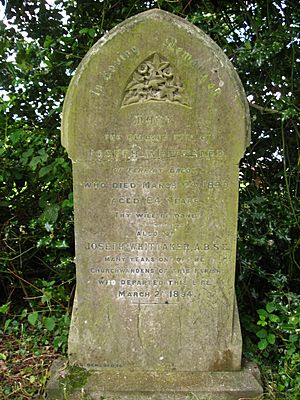
Joseph Whittaker gravestone, Derbyshire
|
|
| Born | 1813 Breadsall
|
| Died | 1894 |
| Nationality | British |
| Education | nurseryman |
| Occupation | schoolmaster, nurseryman |
| Known for | Flora of Australia, Flora of Derbyshire |
| Spouse(s) | Mary |
Joseph Whittaker (1813 – 1894) was a British botanist. He was a plant expert who traveled to faraway lands. Joseph Whittaker collected many plants during his life. About 300 plants he collected in Australia are now at Kew Gardens. He also collected 2,200 pressed British plants. These are kept at the Derby Museum and Art Gallery.
Contents
Joseph Whittaker's Early Life
Joseph Whittaker was born in 1813. We don't know his exact birthday. He was christened in Quarndon, near Derby, England. His father was also named Joseph. His mother was Sarah. Joseph grew up in Breadsall, a village in Derbyshire.
Plant Collecting in Australia
In 1838, Joseph Whittaker went on a long journey. He sailed to Australia as a gardener. His boss was George Gawler, who was the new Governor of South Australia. Joseph, seven other workers, and the Gawler family traveled for four months. They arrived in Adelaide on October 12, 1838.
When they got to Australia, things were tough. There wasn't much time for gardening. But Joseph still collected plants. He gathered many different plant samples in South Australia. He explored places like the Mount Lofty Ranges and the Murray River. He was the first person to collect plants from the mountainous Fleurieu Peninsula.
Whittaker stayed in Australia for 19 months. He then sailed back to England in 1840. On his way home, his ship stopped at several places. These included Kangaroo Island, Mauritius, and Saint Helena. Joseph collected even more plant samples at these stops.
Botany in Derbyshire
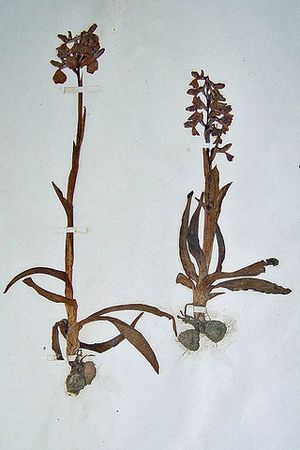
Joseph Whittaker arrived back in England in September 1840. By 1844, he was collecting plants again. He collected plants all over Derbyshire. Sometimes, he even traveled to other parts of England and Wales.
By 1846, Joseph was a teacher. He taught at Breadsall Boys School in Breadsall. He wrote letters to William Jackson Hooker, who was the Director of Kew Botanic Gardens. Joseph wanted to write books about British plants. He traded some of his Australian plant samples for others.
Kew Gardens eventually got about 300 plants from Whittaker. These were plants he collected outside the UK. A type of sundew plant was even named after him. It is called Drosera whittakeri.
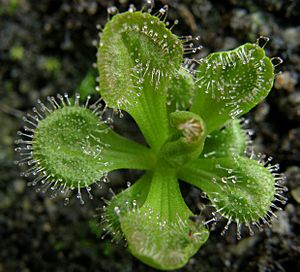
In 1847, Joseph joined the Botanical Society of London. He traded plant samples with other members. He also joined other plant clubs. In 1847, he published a list of rare plants found near Breadsall. This list showed the many different plants in the area.
By 1857, he was still a schoolmaster in Breadsall. He taught 90 children. Later, he moved to the village of Morley, near Derby. He lived there with his wife, Mary. He continued to teach students at his home. He also grew a large collection of living plants. He had over 1,300 different kinds of plants!
By 1871, Joseph stopped being a schoolmaster. He became a "seedsman and florist." This means he sold seeds and flowers. By 1881, he was a successful "nurseryman and farmer."
Joseph Whittaker passed away on March 2, 1894. A special memorial was built for him. It was placed in St Matthew's Church in Morley. He was a church warden there and was buried in the churchyard.
Joseph Whittaker's Legacy
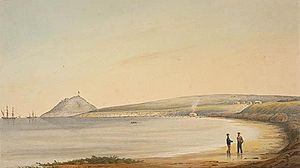
Joseph Whittaker's plant collection at Kew Gardens is very important. It shows the plants he found in Australia and during his travels. He also left 2,200 pressed plants in 79 books. Most of these are from Derbyshire. They are now kept in the herbarium at Derby Museum and Art Gallery. These plants help people study the plants of Derbyshire.
Because he traded plants with other clubs, many museums have his samples. You can find Whittaker's plants in museums in Bolton, Birmingham, Gloucester, and Manchester. The Wisbech & Fenland Museum also has some of his collection.
Images for kids


